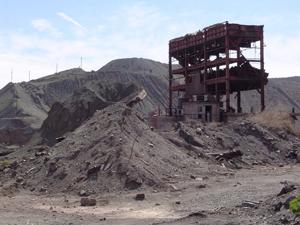
As Eagle Crest Energy awaits what it hopes will be final governmental approval for its proposed $2 billion hydropower energy storage project near Joshua Tree National Park, the Santa Monica company is hoping to boost the project’s chances with a land gift and the announcement of a major development partner.
The company entered discussions this month with the National Park Service to hash out details of how it would return thousands of acres of land it owns to Joshua Tree National Park. The land donation could help assuage some of the Park Service’s concerns about the hydropower storage project at the abandoned Eagle Mountain mine just outside the park.
Eagle Crest also confirmed last week that one of the nation’s largest developers of renewable energy projects, NextEra Energy of Juno, Fla., has joined the project as a development partner. NextEra posted $17.5 billion in revenues in 2015 and claims to be the world’s largest developer of wind and solar projects.
“NextEra has extensive experience in developing renewable energy in California,” said Steve Lowe, Eagle Crest’s president. “We are pleased to have them as a partner.”
All this comes as the federal Bureau of Land Management is preparing to rule on Eagle Crest’s application for right of way to build both a power transmission line and a water pipeline through public land to the south and east of Eagle Mountain. That ruling is expected to come in the next several weeks.
David Smith, superintendent of Joshua Tree National Park, said that regardless of the land transfer under discussion, the Park Service has substantial concerns about the Eagle Crest project and its effects on a local aquifer.
But the proposed land transfer does reduce concerns about future development in the area outside of the pumped hydropower storage project, he said.
If the BLM grants the approval, Eagle Crest will then have all of the government permits needed to proceed with the massive hydropower storage project.
Eagle Crest plans to use the abandoned mine site – where scenes from “Terminator 2: Judgment Day” were filmed – to store electricity generated from nearby wind and solar projects for release to the grid during peak demand periods.
The plan would turn two huge mine pits into reservoirs, drawing water from the aquifer beneath the site. Energy from those wind and solar projects would be used to pump water from the lower to upper reservoir for storage.
When called for, the water flow would be reversed, releasing energy that would be transmitted back to the power grid.
At maximum, 1,300 megawatts of electricity could be transmitted to the grid, enough to power nearly 1 million homes and about 60 percent of what the now-shuttered San Onofre Nuclear Generating Station could generate.
Backers of the project say it’s essential as the state increasingly turns to alternative power sources. Because wind and solar are intermittent power sources, state officials and electric utility executives have been scrambling to find ways to store that energy so it can flow to the grid when needed most.
The Eagle Crest plan faces opposition from environmental groups and serious concern from the Park Service, which argue the project threatens an aquifer that feeds nearby springs, including inside Joshua Tree National Park. The reservoirs, they say, also would attract ravens and other natural predators of the threatened desert tortoise.
